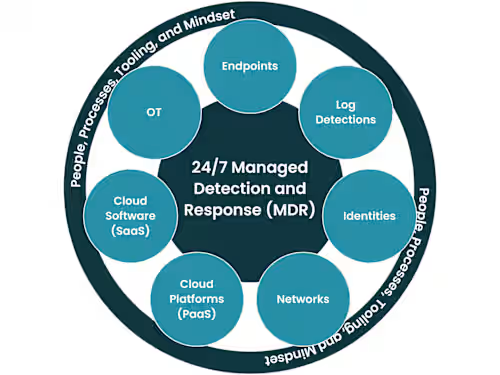
Managed Detection & Response with Compliance and SOC Integration
Contact for pricing
About this service
Summary
What's included
SOC-Driven Threat Monitoring & Detection
24/7 real-time monitoring through an SOC with advanced tools for detecting potential threats.
Incident Response, Mitigation & SOC Reporting
Immediate SOC-coordinated response to threats, including containment, eradication, and recovery. Full incident reporting with compliance insights.
Compliance Auditing & Reporting
Regular audits and reports to ensure adherence to relevant industry regulations, keeping the organization compliant with standards like ISO 27001.
Threat Intelligence & Compliance Reports
Regular threat intelligence reports with compliance assessments to address both security and regulatory risks
Security Posture Review
Monthly or quarterly reviews from SOC with compliance checks to ensure defenses are robust and in alignment with regulations.
Detailed Incident and Compliance Reports
Comprehensive post-incident reports, including root cause analysis, threat details, and regulatory compliance actions




